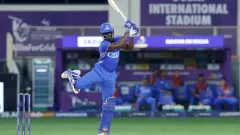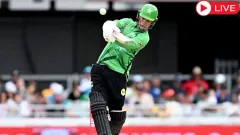The Asia Cup 2023 was a cricket tournament held in Pakistan and Sri Lanka from 30 August to 17 September 2023. The tournament featured national cricket teams from Asia including India, Pakistan, Sri Lanka, Bangladesh, Afghanistan, and Nepal. It was played in One Day International (ODI) format.
In terms of technology, the Asia Cup 2023 saw the use of various technological advancements commonly used in modern cricket tournaments
However, it is common for sporting events to incorporate various technologies to enhance the viewing experience, improve player performance analysis, and ensure fair play. Some of the possible technologies relevant to Asia Cup 2023 include the following. Here is the cricket technique to be used in Asia Cup 2023
Cricket Technology in Asia Cup 2023
Spider Cam and Drone Technology

Spidercam and drone coverage have revolutionized the way cricket matches are broadcasted, offering dynamic and visually engaging perspectives that enhance the viewer experience. Spidercam is a camera system suspended on cables high above the playing field. It consists of a camera mounted on a mechanical gimbal that can move in various directions, providing unique angles and shots during a cricket match. Some of the key applications of Spidercam in cricket include.
How Spider Cam and Drone Works - Camera system on cables, moved by operators, offers aerial and dynamic shots, integrated into broadcasts and Drone Camera-equipped UAVs, piloted remotely, capture aerial views, dynamic shots, integrated into broadcasts for enhanced visuals.
Hawk-Eye Technology

Hawk-Eye Technology is a sophisticated ball-tracking system used in cricket to provide accurate visual representations of the ball's trajectory and its likely path after bouncing. It has become an integral part of modern cricket, especially for decisions involving LBW (Leg Before Wicket) and for reviewing close calls for catches and boundaries. Here's how Hawk-Eye works and its significance in cricket
How Hawk-Eye Works - Hawk-Eye uses a combination of cameras strategically placed around the stadium to track the movement of the ball. The system captures multiple images of the ball's position in space as it travels from the bowler's hand to the batsman and beyond. The data from these images is then processed to create a three-dimensional representation of the ball's path.
The technology takes into account factors like the speed of the ball, its trajectory, the pitch conditions, and other relevant variables. This data is used to predict how the ball would have behaved had it not hit the batsman's pad or other parts of the field, providing a virtual trajectory that can be used for decision-making.
Snickometer Technology

The Snickometer, often referred to as "Snicko," is a technology used in cricket to detect faint edges made by the ball as it passes the bat. It provides audio and visual evidence of whether the ball has touched the bat or other equipment like the pads or gloves. The Snickometer is particularly useful in cases where the ball makes a slight contact with the bat and is not easily discernible to the naked eye or even to the on-field umpires.
How Snickometer Works - The Snickometer system overlays the audio waveform on the video replay. This creates a synchronized representation where viewers and officials can see the exact moment the ball passes the bat, along with the corresponding sound.
Also Read: Impact of Technology on Modern Cricket
Smart Stumps and Bails Technology

"Smart Stumps" is a term used to refer to a technology that involves embedding sensors or electronic components within the stumps and bails used in cricket. These sensors are designed to detect specific events such as the ball hitting the stumps or bails being dislodged. The technology is used to aid in decision-making by providing instant visual and audio cues to the on-field umpires and viewers. Here's how smart stumps work and their significance in cricket:
How Smart Stumps Works - Smart stumps are equipped with sensors that can detect various events during a cricket match. These events typically include Ball Hitting Stumps. Sensors can detect when the ball hits the stumps, such as when a bowler's delivery strikes the stumps without dislodging the bails. Sensors can also detect when the bails are completely dislodged from the stumps. This is crucial for decisions involving run-outs and stumping.
Ball Tracking Technology

Ball tracking technology, commonly known as "ball tracking," is a technology used in cricket to analyze the trajectory and movement of the ball as it travels toward the batsman. It is a critical component of the Decision Review System (DRS), which allows teams to challenge on-field decisions made by the umpires. Here's how ball tracking works and its significance in cricket
How Ball Tracking Works - Ball tracking technology uses a combination of cameras, sensors, and algorithms to track the path of the ball after it leaves the bowler's hand. The technology can predict where the ball would have traveled had it not been interrupted by the batsman, pitch, or other factors. High-speed cameras are positioned around the ground to capture the trajectory of the ball from various angles. These cameras provide the necessary data for the algorithms to create a three-dimensional representation of the ball's path
Player Performance Analysis

Player performance analysis in cricket involves the use of data and technology to analyze various aspects of a player's performance during matches and practice sessions. This analysis provides insights that can be used to optimize training, strategize gameplay, and enhance overall team performance. Here's how player performance analysis works and its significance in cricket.
How Player Performance Analysis Works - Batting data includes metrics such as runs scored, strike rate, shot selection, boundary count and outings. It may also occupy areas of the field where a player scores most of his runs. Similarly, Bowling Data, Fielding Data, and Fitness Metrics can all be provided by this technology.
Also Read: Asia Cup 2023: Schedule, Points Table, Squad and Venues
Disclaimer
Possible11 is a sports news and analysis platform designed purely for entertainment and educational purposes. All match previews, player insights, and team analyses are based on publicly available information and expert opinions. We do not promote or support betting, gambling, or real-money gaming in any form. Users are encouraged to enjoy our content responsibly and use it for informational purposes only.































Give Your Feedback